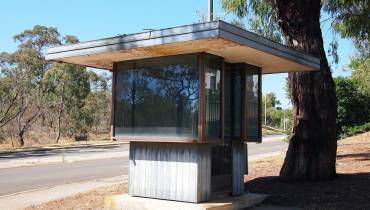The Environmental Effect of NFTs

Digital currencies and NFts are arguably the eventual fate of money and art across the board. So, how about we figure out what NFT can mean for the world's natural environment as one of the most prominent innovation transformation today?
Like cryptocurrencies, NFTs have upset the world as we knew it. Presently, rather than clamouring over the Mona Lisa by famed Italian artist Leonardo da Vinci, authorities are clamouring over works crafted by digital artists like Beeple, 3LAU, and José Delbo.
In any case, not at all of us like actual things of beauty; NFTs are valued and traded in a very unexpected way.
What are NFTs?
An NFT, or non-fungible token, is a piece of digital media that has been tokenized on a blockchain, such as the Ethereum organization blockchain.
In other words, NFTs are cryptographic assets that can come in the form of art, music, in-videos, game items, and more which are based on blockchain technology. So, an NFT art is a piece of digital art that only exists on the Blockchain through a decentralized ledger.
Other than Ethereum, Solana, WAX, Tezos, and Stream are other well-known blockchains for NFTs. However, as Ethereum is the most settled, it is right now the organization of decision in general.
How would you store NFTs?
![]()
Like cryptographic forms of money, you can store NFTs in specific computerized wallets. As a matter of fact, probably the best NFT wallet applications have implicit support for standard digital currencies. As a result, you can access both your crypto and non-fungible tokens on a single stage.
Yet, do remember that security is a significant issue for computerized resources. As digital currencies and NFTs have become very popular, programmers and cybercriminals have taken to hacking into NFTs and crypto wallets and taking their items. In spite of the different advances taken by wallet suppliers, programmers are turning out to be progressively complex.
It is as a result of this that I enthusiastically suggest that you utilize both hot and cold wallets. A cool wallet is an equipment-based capacity gadget like a pen drive or hard drive that stores computerized resources disconnected. Furthermore, this makes it close to-unthinkable for a programmer to get to your crypto tokens or NFTs.
Environmental impact of NFTs
On the face of it, NFTs really do not affect the environment. All things considered, it is the strategy wherein these resources are delivered that has caused a commotion.
The concern is on the grounds that NFTs require massive amounts of PC handling ability to approve exchanges. What's more, this prompts a tremendous utilization of electric power, which can inadvertently end up leading to higher fossil fuel byproducts.
It’s necessary to investigate (and not assume or ignore) the effect that increasing NFT exchange around the world has on the climate and natural environment.
Increasing use of petroleum derivatives to generate energy for NFT and crypto mining may in fact contribute to a general rise in worldwide temperature, which has already been occurring and causing unfavorable weather and climate changes.
You may, presumably, then ask: “Are there any NFTs that require less energy and cause less harm to the environment? Luckily, the answer is a resounding yes.
Greener NFT options
Some NFTs require less energy and support people all over the world to move to greener options. It is no wonder that NFTs stamped on the Solana and Tezos blockchains have become progressively popular. These blockchains utilize a PoS agreement instrument to approve exchanges and essentially require less handling power.
Other examples of blockchains that are energy-efficient (require less energy), cost-effective, and have smart contract capabilities that may be better for the environment include:
1. Solana
Solana has been broadly praised for the speed at which it processes exchanges and for its low energy expenses, unlike those frequently associated with the Ethereum organization. As a result, Solana is at times called the "Ethereum executioner.”
In light of the fact that Solana utilizes essentially less energy than Ethereum to deal with exchanges, the blockchain has a lot less carbon imprint. This is thanks to the PoS agreement component that keeps things moving rapidly.
Thus, it ought to not shock you to see that Solana is among the most well-known NFT blockchain networks available. What's more, as an additional benefit, Solana NFTs are supported by most NFT wallet applications too.
2. Tezos
Another strong competitor in the greener NFT arena is Tezos. Tezos uses a similar PoS agreement component as Solana to approve exchanges. Other than that, the blockchain has a functioning local area behind it with people who value the organization's drawn out upgradability and don't dial back the more clients it gets.
Other reasons why Tezos is a top option is that it is energy-efficient, security-centered, and versatile. This implies that it has less severe environmental impact as its NFTs require less energy to mint and trade. This makes for a genuinely strong NFT blockchain when you are looking to protect the environment.
3. Stream
Some people consider Stream to be a worthy replacement for Ethereum, because the organization is energy-efficient, adaptable to estimate, and extremely secure. Stamping a NFT on Stream may utilize less energy than firing up a Google search.
Something else you would do well to note is that Stream has cooperated with big trustworthy brands like the NBA to mint custom NFTs, which can be stored in most NFT wallets. All of which goes to show the potential this blockchain network has.
In conclusion
NFTs are probably going to be the future of modern art, craftsmanship, and collectibles as the world becomes progressively digitalized. But it’s worth stressing that people should continue to investigate and find more green options for NFT blockchains.
In any case, the onus is currently on designers and aficionados to search and bring to market more environment-friendly solutions. One approach to doing so is stamping NFTs on blockchain networks that are both energy-efficient and cost-effective.



















